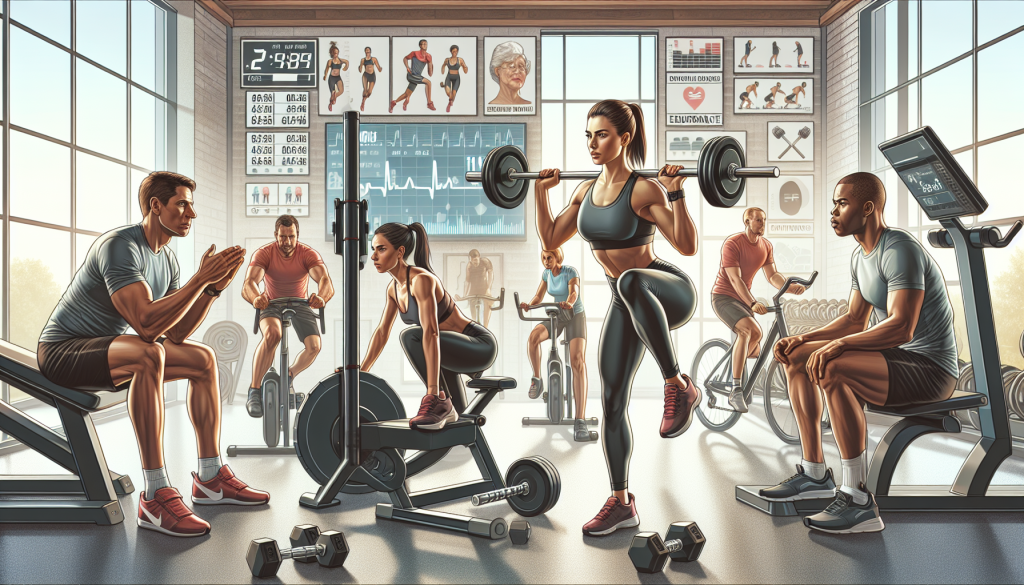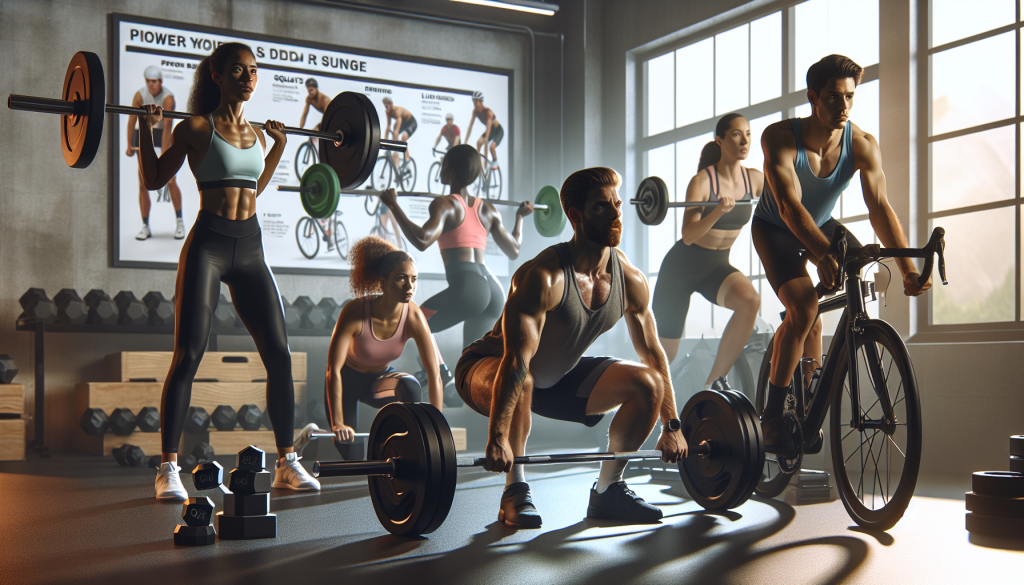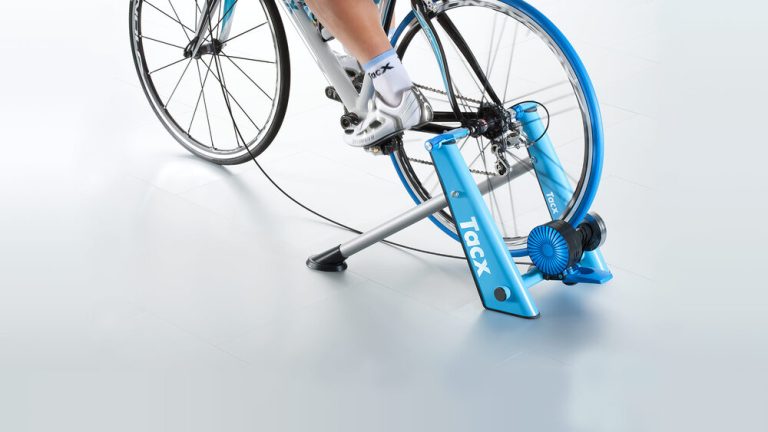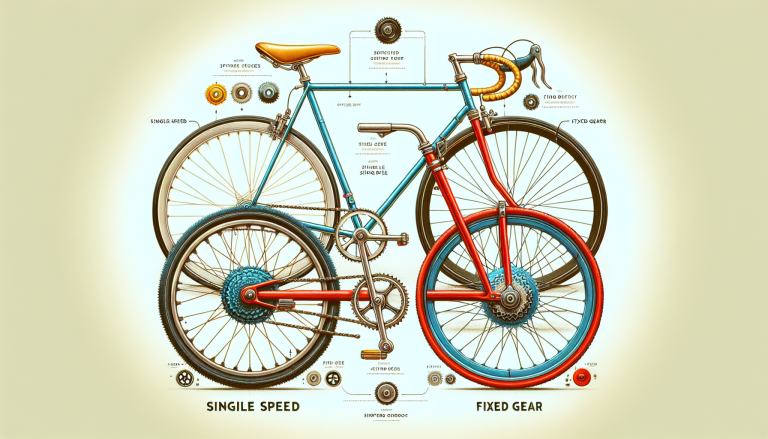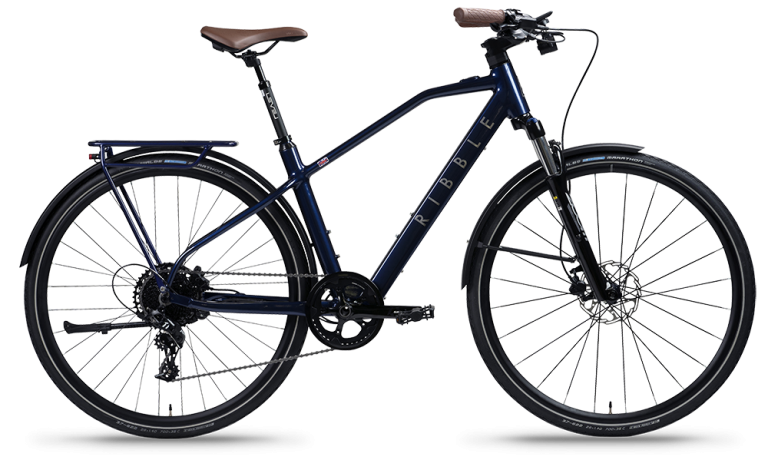Are you a cyclist looking to enhance your performance on the bike? Look no further! This article is here to guide you through a range of effective strength exercises specifically tailored for cyclists. By incorporating these exercises into your training routine, you can improve your power, stability, and overall cycling performance. Whether you’re a seasoned rider or just starting out, these exercises will help you reach new heights in your cycling endeavors. So, grab your gear and get ready to take your cycling fitness to the next level! Cycling is a great way to stay fit and active, but it’s important to remember that cycling primarily targets the lower body. While the legs certainly get a good workout, it’s equally important to have a strong upper body and core to enhance your cycling performance and prevent imbalances and injuries. In this article, we will explore various strength exercises that can benefit cyclists, targeting different areas of the body.
Table of Contents
ToggleUpper Body Strength
Plank
The plank is a simple yet effective exercise that engages multiple muscles in the upper body, including the shoulders, chest, and core. Start in a push-up position and hold your body in a straight line. Keep your core tight and hold the position for as long as you can. Gradually increase the duration as your strength improves.
Push-ups
Push-ups are a classic exercise that builds strength in the chest, shoulders, and triceps. Place your hands on the ground slightly wider than shoulder-width apart, and your toes on the ground. Lower your body until your chest is close to the ground, then push back up to the starting position. If regular push-ups are too challenging, you can modify them by performing them on your knees or against a wall.
TRX Rows
TRX rows are a fantastic exercise for strengthening the back, shoulders, and arms. Hold the TRX handles with your palms facing each other and lean back, keeping your body straight. Pull your chest towards the handles, squeezing your shoulder blades together. Lower yourself back down and repeat.
Shoulder Press
The shoulder press is a great exercise for building strength in the shoulders and arms. You can perform it with dumbbells or a barbell. Start with the weight at shoulder level, palms facing forward. Press the weight straight up above your head, fully extending your arms. Lower the weight back down to the starting position and repeat.
Core Strength
Crunches
Crunches are a classic abdominal exercise that targets the rectus abdominis, or the “six-pack” muscles. Lie on your back with your knees bent and feet flat on the ground. Place your hands behind your head, and lift your head, neck, and shoulders off the ground, engaging your abs. Slowly lower yourself back down and repeat.
Russian Twists
Russian twists work the obliques, which are the muscles on the sides of the abdomen. Sit on the ground with your knees bent, feet flat on the floor, and lean back slightly while keeping your back straight. Hold a weight or medicine ball with both hands and twist your torso from side to side, touching the weight or ball to the ground on each side.
Bicycle Crunches
Bicycle crunches are a challenging exercise that targets the entire core, including the rectus abdominis and obliques. Lie on your back with your hands behind your head and your legs lifted, knees bent at 90 degrees. Bring your left elbow towards your right knee while straightening out your left leg. Switch sides, bringing your right elbow towards your left knee, and continue alternating in a cycling motion.
Plank Variations
There are countless variations of the plank that can challenge your core even further. Some examples include side planks, plank jacks, and plank with leg lifts. Experiment with different variations to keep your core workouts interesting and effective.
Leg Strength
Squats
Squats are a fundamental leg exercise that targets the quadriceps, hamstrings, and glutes. Stand with your feet shoulder-width apart, toes slightly turned out. Bend your knees and lower your hips down towards the ground, keeping your back straight and chest lifted. Push through your heels to return to the starting position and repeat.
Lunges
Lunges are another excellent exercise for developing leg strength. Stand tall with your feet together. Take a step forward with your right foot, and lower your body down until your right knee is bent at a 90-degree angle. Push through your right heel to return to the starting position. Repeat on the other side, alternating legs.
Deadlifts
Deadlifts are a compound exercise that targets multiple muscles, including the hamstrings, glutes, and lower back. Start with your feet shoulder-width apart and a loaded barbell in front of you. Bend at the hips and knees, keeping your back straight, and grip the barbell with an overhand grip. Drive through your heels and lift the barbell up, extending your hips and straightening your knees. Lower the barbell back down with control and repeat.
Step-ups
Step-ups are a functional exercise that mimics the motion of climbing stairs. Stand in front of a step or platform, and place your right foot firmly on top. Push through your right heel to lift your body up onto the step, bringing your left foot up to meet your right. Step back down with your left foot first, then your right foot. Repeat, alternating legs.
Hip and Glute Strength
Hip Thrusts
Hip thrusts are a highly effective exercise for targeting the glutes. Start by sitting on the ground with your back against a bench or elevated surface. Place a weight or barbell across your hips. Drive through your heels and lift your hips up towards the ceiling, squeezing your glutes at the top. Lower your hips back down and repeat.
Bridges
Bridges are another great exercise for activating the glutes. Lie on your back with your knees bent and feet flat on the ground, hip-width apart. Lift your hips up towards the ceiling, pressing your heels into the ground. Squeeze your glutes at the top, then lower your hips back down and repeat.
Clamshells
Clamshells target the gluteus medius, a smaller muscle on the side of the hip. Lie on your side with your knees bent and feet together. Lift your top knee as high as you can while keeping your feet together, then lower it back down. Repeat on the other side.
Single-leg Glute Bridge
This exercise takes the glute bridge to the next level by challenging each glute individually. Begin by lying on your back with your knees bent and feet flat on the ground. Lift one leg off the ground and extend it straight in front of you. Lift your hips up towards the ceiling, using your standing leg to support your body. Lower your hips back down and repeat on the other leg.
Lower Back Strength
Supermans
Supermans are a simple yet effective exercise for strengthening the lower back. Lie face down on the ground with your arms extended in front of you. Lift your chest, arms, and legs off the ground, keeping your gaze down to maintain a straight neck. Hold the position for a few seconds, then lower yourself back down and repeat.
Bird Dogs
Bird dogs are a great exercise for improving stability and strengthening both the lower back and core. Start on your hands and knees, with your wrists under your shoulders and your knees under your hips. Extend your right arm in front of you while simultaneously extending your left leg behind you. Hold for a few seconds, then switch sides and repeat.
Back Extensions
Back extensions target the muscles in the lower back and are often performed on a back extension machine. Adjust the machine so that your thighs and hips are supported, and your upper body is free to move. Lower your upper body down towards the ground, then lift it back up to a neutral position. Repeat for the desired number of repetitions.
Romanian Deadlifts
Romanian deadlifts primarily target the hamstrings and glutes but also engage the lower back. Stand with your feet hip-width apart and hold a barbell or dumbbells in front of your thighs. Hinge at the hips, keeping your back straight, and lower the weights towards the ground. Push through your heels and return to a standing position, squeezing your glutes at the top.
Balance and Stability
Single-leg Stance
The single-leg stance exercise is a simple yet effective way to improve balance and stability. Stand on one leg and try to maintain your balance for as long as possible. Repeat on the other leg. To make the exercise more challenging, try closing your eyes or standing on an unstable surface.
Bosu Ball Exercises
Using a Bosu ball is a great way to challenge your balance and stability. Perform exercises like squats, lunges, and push-ups while standing or placing a hand or foot on the Bosu ball. The unstable surface of the Bosu ball forces your muscles to work harder to maintain stability.
Balance Board Exercises
Balance boards are another tool that can help improve balance and stability. Stand on a balance board with your feet hip-width apart, and try to maintain your balance while the board wobbles underneath you. You can also perform exercises like squats or lunges on the balance board to further challenge your stability.
Single-Leg Deadlifts
Single-leg deadlifts are a great exercise for improving balance, stability, and targeting the hamstrings and glutes. Stand on one leg and hinge forward from the hips, extending your free leg behind you for counterbalance. Keep your back straight and lower the weights towards the ground. Return to a standing position by using your glutes and hamstrings to bring your torso back up.
Flexibility Exercises
Hamstring Stretches
Tight hamstrings can limit your cycling performance and increase the risk of injury. To stretch your hamstrings, sit on the ground with your legs extended in front of you. Lean forward from the hips and reach for your toes. You should feel a stretch in the back of your legs. Hold the stretch for 20-30 seconds and repeat several times.
Quad Stretches
Stretching the quadriceps is essential for maintaining flexibility and preventing imbalances. Stand tall and grab your right ankle with your right hand, pulling your heel towards your glutes. Keep your knees close together and your hips square. Hold the stretch for 20-30 seconds and repeat on the other leg.
Calf Stretches
The calves are another area that can become tight from cycling. Stand facing a wall and place your hands against it at shoulder height. Step one foot back and press your heel into the ground while keeping your leg straight. You should feel a stretch in your calf. Hold for 20-30 seconds and switch sides.
Hip Flexor Stretches
Cycling can cause tightness in the hip flexors, which can lead to imbalances and discomfort. Kneel on one knee with your other leg in front of you, foot flat on the ground. Push your hips forward while keeping your torso upright. You should feel a stretch in the front of your hip. Hold for 20-30 seconds and repeat on the other side.
Plyometric Exercises
Box Jumps
Box jumps are an explosive exercise that targets your leg muscles and helps improve power and speed. Start by standing in front of a sturdy box or platform. Bend your knees and swing your arms back, then explode upwards and forwards, landing with both feet on the box. Step back down and repeat.
Jump Squats
Jump squats are a high-intensity exercise that combines a squat with explosive jumps. Start with your feet shoulder-width apart, and lower yourself into a squat position. From the bottom of the squat, explosively jump up as high as you can. Land softly and immediately go into the next repetition.
Lateral Bounds
Lateral bounds are a great exercise for improving lateral power and strengthening the muscles of the lower body. Begin by standing on one leg with the opposite knee slightly bent. Jump sideways as far as you can, landing on the opposite leg. Repeat on the other side, alternating legs.
Skater Jumps
Skater jumps mimic the motion of a skater gliding from side to side. Start by standing on one leg with the opposite leg slightly behind you. Jump sideways to the left, landing on your left leg with your right leg crossed behind you. Repeat on the other side, alternating legs.
In conclusion, incorporating strength exercises into your cycling routine is crucial for overall performance improvement, injury prevention, and maintaining a well-balanced physique. By targeting the upper body, core, legs, hips and glutes, lower back, balance and stability, flexibility, and adding plyometric exercises, you can enhance your cycling experience and take your fitness to new heights. Remember to start with proper form, gradually increase the intensity, and listen to your body. Here’s to stronger cycling and a healthier you!

